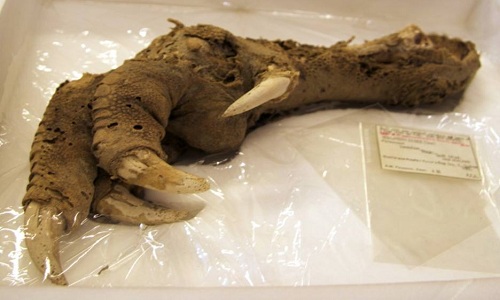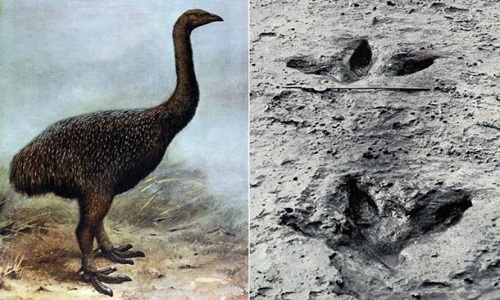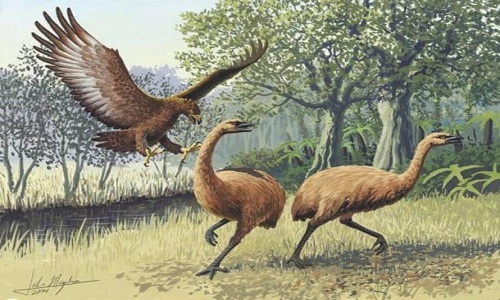Detected 3,300 years claws of the wingless prehistoric bird
Nearly three decades ago, a group of archaeologists discovered a giant bird claw in the cave on Mount Owen, New Zealand.
3,300 year claws of upland moa
The analytical results show that the mysterious claw is the body part left over from the 3,300-year-old dried bird of the highland moa , a prehistoric bird that disappeared many centuries ago.

The bird moa's claws are intact after 3,300 years.(Photo: Wikimedia Commons.)
Highland moa (Megalapteryx didinus) is a unique moa bird of New Zealand. DNA analysis published in the Proceedings of the US National Academy of Sciences on February 7, 2014 shows that moa birds first appeared 18.5 million years ago and included at least 10 species.

Illustrations of moa birds and moa bird footprints are preserved.(Photo: Wikimedia Commons.)
At a height of more than three meters, the moa was once the largest bird on the planet. However, upland moa is the smallest moa when only 1.3 m tall. This bird has feathers covering the whole body, except for mines and feet. They don't have wings or tails. As the name suggests, they live in cool highlands in New Zealand.
The moa was first discovered in 1839 by John W. Harris, a natural history merchant. Later, scientists found thousands of moa specimens, many of which had intact soft tissue with muscles, skin and hair. Most fossils lie under dunes, marshes, caves, where birds moa nest or avoid bad weather. The specimen is preserved by the drying process when the moa bird dies in a dry natural area.

Haast Eagle attacked the moa bird in New Zealand.(Photo: Wikimedia Commons.)
When the Polynesians immigrated to New Zealand in the middle of the 13th century, the moa birds were thriving. They are the dominant herbivores in the forests, grasslands and surrounding areas of the high mountains for thousands of years and the only enemy is the Haast eagle. However, when humans appeared, moa birds quickly became extinct due to hunting and habitat destruction.
According to the Museum of Natural History in London, England, because the moa bird grows very slowly, they cannot reproduce fast enough to maintain the race, leading to a higher risk of extinction . The moa was extinct before the Europeans arrived in New Zealand in 1760.
- Prehistoric birds sacrifice their tails to evolve
- What color does prehistoric birds have?
- The giant bird once dominated the Antarctic sky 50 million years ago
- Wingless kiwifruit
- One of the most feared prehistoric beasts was extinct because of eating vegetables
- The most intact bird fossil in amber 99 million years
- New bird flu detected in the Netherlands
- Prehistoric birds weigh half a ton and 3.5 meters high
- Footprints of 3.6 million years of prehistoric people reveal many secrets
- Stunned the face of the prehistoric girl 40,000 years ago was first made
- Discover the most feared prehistoric terrorist bird
- South Korea detected suspected cases of bird flu
 Discovered an ancient centipede fossil 99 million years old
Discovered an ancient centipede fossil 99 million years old Discovered bat-like dinosaurs in China
Discovered bat-like dinosaurs in China Discovered a 200-year-old bronze cannon of the coast
Discovered a 200-year-old bronze cannon of the coast Discover 305 million-year-old spider fossils
Discover 305 million-year-old spider fossils